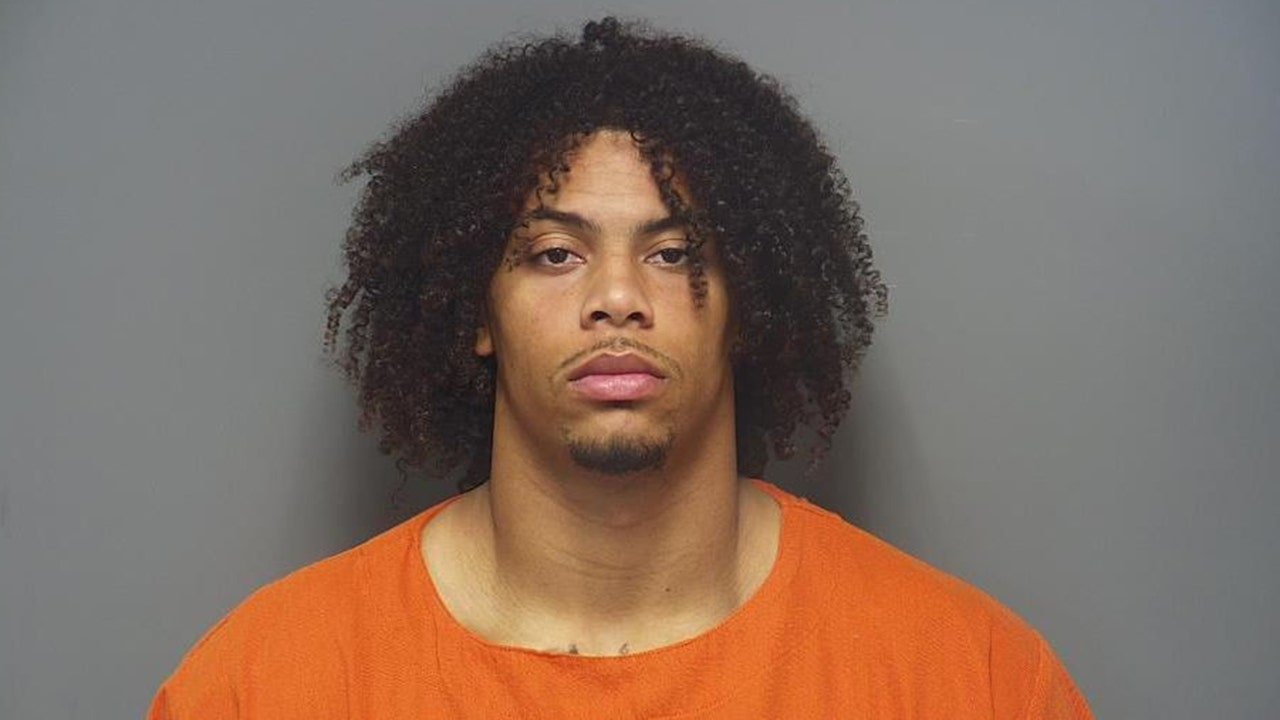
Enphase IQ Battery Review: Less Power Than Competitors, but a Stronger Model Is Here
[ad_1]
6.1
Enphase IQ Battery 10/10T
Like
Decent capacity and efficiency
Cheaper price
Can be installed with or without solar panels
Don’t like
Low power output
Negative customer reviews
A solar panel by itself won’t help you when the power goes out. To protect your home from outages, you’ll need a home battery backup. Because every home’s energy needs are a bit different, batteries are a complex purchase. Enphase offers a decent starting point.
Enphase is one of the most recognizable names in the solar battery and inverter world, offering three different battery models that are each embedded with their famed microinverters. These batteries — the IQ Battery 3 and IQ Battery 10 models — are smaller and less powerful than options from other manufacturers. Enphase recently released a smaller, much more powerful battery called the IQ Battery 5P. This new battery rivals the power output of larger batteries at half the capacity size, which is impressive for a small battery.
“The IQ Battery 5P is an incredibly powerful battery for the size,” Ashley Martin-Golis, Enphase’s director of product marketing, told CNET. “And what that allows people to do is be able to start up almost any power-hungry appliance in their home with one or two batteries. You can have a relatively small battery install but still be able to start up your HVAC or your pool pump.”
Interested in solar batteries?
Enter some basic information below to learn more about solar batteries and receive a free online estimate of your energy savings from going solar.
Enphase’s batteries are designed to be installed in bundles, creating a modular storage system where capacity and power output stack with each battery installed. This modular design of smaller batteries makes it easier for homeowners to get the capacity size that’s “just right” for their home. Just keep in mind that you can’t install the new IQ Battery 5P with Enphase’s other batteries.
Solar batteries are part of a complex home energy system that depends a lot on your individual home, needs and solar panels. This makes it difficult to do hands-on testing. This review is based on specs and information provided by Enphase online and an interview with Martin-Golis to get the most accurate and up-to-date information.
Here’s what you should know about Enphase batteries.
What do I get with an Enphase IQ battery?
Enphase offers three different batteries: the IQ Battery 3/3T, the IQ Battery 10/10T and its newest battery, the IQ Battery 5P. The IQ Battery 3/3T and IQ Battery 10/10T models are fairly standard for their respective sizes but suffer from lower-than-average power output ratings. The IQ Battery 5P is Enphase’s newest generation of battery technology, offering impressive power output ratings at a much smaller capacity size. Note that the Enphase “IQ Battery 3T” and “IQ Battery 10T” have the exact same specs as the IQ Battery 3 and IQ Battery 10. The “T” battery models are made thinner. Here’s a quick breakdown of Enphase’s battery specs.
Like:
-
Modular
-
Decent efficiency
-
Cheaper price
Don’t like:
-
Low power output
-
Smaller size battery
Enphase IQ battery specs
| Enphase IQ Battery 3/3T | Enphase IQ Battery 10/10T | Enphase IQ Battery 5P | |
| Usable capacity | 3.36 kWh | 10.08 kWh | 4.96 kWh |
| Round-trip efficiency | 89% | 89% | 90% |
| Depth of discharge | 98% | 98% | 98% |
| Peak power output (on-grid) | 1.92 kW | 5.7 kW | 7.68 kW |
| Continuous power output (on-grid) | 1.28 kW | 3.84 kW | 3.84 kW |
| Battery type | Lithium iron phosphate | Lithium iron phosphate | Lithium iron phosphate |
| AC- or DC-coupled? | AC | AC | AC |
| Price | $2,000 – $4,000 | $8,000 – $10,000 | N/A |
System Components
Enphase batteries function as an all-in-one AC-coupled system and are mainly known for their embedded microinverters. A few other components are needed to make this battery system work. Here’s a quick look at the system components you can expect to have installed with an Enphase battery:
- Embedded microinverters
- IQ system controller
- IQ combiner
Every Enphase battery size comes with a certain number of embedded microinverters, which help your battery output power. Every system will also include an IQ system controller, which connects the battery to the grid and functions as a centralized place for wiring. With the release of its new battery (IQ Battery 5P), Enphase also released an updated version of the IQ system controller, called IQ system controller 3. It comes in two different types, one type allows you to increase your capacity expansion and the other type allows you to increase your capacity expansion and add a generator.
If you have solar panels, your battery system will include an IQ combiner component. The IQ combiner measures your energy production and consumption and provides an additional place to centralize some wiring. You’ll be able to view your production and consumption data through the Enphase app. More details about Enphase’s system design and components can be found on its website.
Capacity and modularity
Each of Enphase’s three battery options offers a different storage capacity. Here is the usable capacity of each Enphase battery:
- IQ Battery 3/3T: 3.36 kWh
- IQ Battery 5P: 4.96 kWh
- IQ Battery 10/10T: 10.08 kWh
While these batteries are a bit on the smaller side, you’ll be able to install multiple Enphase batteries to stack additional capacity. You can even mix and match the IQ Battery 3/3T and IQ Battery 10/10T models. You won’t be able to mix and match newer generation battery tech (IQ Battery 5P) with older generation battery tech (IQ Battery 3/3T and IQ Battery 10/10T models). It’s also important to note that all Enphase batteries are compatible with and without solar, meaning you can still install Enphase batteries as a home backup without solar panels.
Performance and efficiency
In terms of power output, an Enphase battery by itself is pretty weak, with the exception of the IQ 5P battery. This battery shares the same continuous power output as the other batteries in Enphases’s lineup (3.84 kW) but offers an impressive peak power output rating for its size (7.68 kW). To put this into perspective, the IQ 5P’s peak power output is on par with a Tesla Powerwall’s peak output (7 kW), which is a much larger 13.5 kWh battery.
The IQ Battery 3/3T and IQ Battery 10/10T models both have weaker power outputs when compared with other batteries of similar size. Power output does increase with additional battery installations. The more batteries you install, the more power you can stack. If you have a larger home or a home that has a lot of large appliances, you’ll likely need multiple Enphase batteries.
As far as efficiency goes, Enphase batteries are about average compared to the batteries we’ve evaluated. The IQ Battery 3/3T and IQ Battery 10/10T models both have a round-trip efficiency of 89%, with the IQ 5P having a slightly higher round-trip efficiency of 90%. This means that only 10% to 11% of your electricity is wasted on its way into battery storage. The average round-trip efficiency for solar batteries is about 90%.
Warranty
The warranties on Enphase batteries are pretty standard for batteries. It’s worth calling out the new IQ 5P’s 15-year warranty. Most batteries come with a 10-year warranty, so we’ll give the IQ 5P bonus points for having longer coverage. It has a lower end-of-warranty capacity guarantee. Here’s a quick breakdown of the warranty details for each Enphase battery.
Enphase IQ battery warranty details
| Enphase IQ Battery 3/3T | Enphase IQ Battery 10/10T | Enphase IQ Battery 5P | |
| Years covered | 10 | 10 | 15 |
| Cycles covered | 4,000 | 4,000 | 6,000 |
| End-of-warranty capacity guarantee | 70% | 70% | 60% |
| Warranty Extension available | Yes, up to 15 years | Yes, up to 15 years | No |
Years covered: A specific amount of time (years) that your battery is covered under warranty. After the specified number of years pass, your warranty expires.
Cycles covered: A specific number of complete cycles your battery can perform under warranty. If your battery surpasses the specified cycle count, your warranty expires. A “cycle” is the process of fully discharging (draining) and recharging your battery. In some battery warranties, your warranty expires once you hit your specified cycle count, no matter how many years you have left on the warranty. Always make sure to check the fine print for cycle and throughput clauses.
End-of-warranty capacity guarantee: This is the manufacturer’s guarantee that your battery will retain a certain percentage of its original maximum capacity by the time your warranty period ends.
Customer support
Customer support with Enphase seems to be hit or miss, but mostly miss. The company’s Better Business Bureau page is flooded with negative reviews, with many complaints centered around failing or faulty microinverters and bad customer service experiences. Reviewers on Trustpilot and Yelp share similar experiences regarding failing microinverters and battery systems, along with frustrations surrounding Enphase’s lack of communication when problems arise.
Enphase Enlighten app
Installing an Enphase battery also gives you access to the Enphase Enlighten app. Most batteries come with a standard app for monitoring energy consumption, production (if you have solar panels) and predicting upcoming energy bills. Enphase is no different. There aren’t any stand-out features, but it does everything you’d expect it to do, and that’s perfectly fine. The app is highly rated, and any complaints it does have tend to target its reporting timeframe.
How much does an Enphase IQ battery cost?
The Enphase IQ Battery 3/3T is about $2,000 to $4,000 before installation and the IQ Battery 10/10T is about $8,000 to $10,000 before installation. Since the IQ Battery 5P hasn’t been on the market for very long, reliable pricing information is unavailable. As a rule of thumb regarding battery pricing, you can typically expect to pay between $1,000 and $2,000 per kWh of storage, but there are exceptions. Other factors affecting battery pricing are location, the installer and how many solar panels you have.
For the most accurate pricing, speak with an Enphase-certified installer in your area. We also recommend shopping around for a few quotes from national and local installers to see who’s willing to give you the best price.
Is an Enphase IQ battery my best choice?
As with most batteries, it really depends on what your energy goals are and the size of your home. Enphase’s battery size offerings are on the smaller side. These batteries have a much weaker power output than competing batteries of similar size, with the only exception being Enphase’s newest battery, IQ Battery 5P. This new battery boasts a much higher peak power output rating and matches the continuous power output of Enphase’s largest battery: the IQ Battery 10/10T. However, the IQ Battery 5P is still a small battery (5 kWh). It’s also worth noting that Enphase’s batteries tend to be cheaper than other batteries.
There are tons of batteries available on the market, meaning your home has more than one battery option. Most installers carry multiple brands of batteries, so we recommend exploring multiple battery options from installers in your area before making your decision.
Read more: Want something smaller than a whole-home solar system? See our picks for the best portable solar panels and solar generators.
How we evaluated the best solar batteries
Every battery is different and is not going to be the right fit for every home. Without an on-site inspection, it’s difficult to determine which solar battery is the “best” battery. Due to the complexity of solar panel systems, we’re unable to do any kind of hands-on testing of any of the solar batteries we review. There are objective ways to evaluate and compare these batteries. Here’s how we evaluate solar batteries.
First, we created categories to evaluate the battery’s efficiency, performance, capacity and value. We also gave each category its own weight. Each category’s weight reflects the importance we felt was relevant to the average consumer. Here are the categories and their weights:
- Battery modularity (stackability) – 20%
- Warranty – 20%
- Round-trip efficiency – 15%
- Depth of discharge – 10%
- Power output – 10%
- Price – 10%
- Customer reviews – 10%
- Battery capacity – 5%
We looked at more than 15 of the most common batteries on the market and collected the data for each category to compare the numbers. Each battery was given a tier-style rating (from 1 to 5) for each category to see which metrics of each battery were above average (among those on our list), average or below average.
Frequently asked questions
How much energy can Enphase batteries store?
The IQ Battery 3/3T can hold 3.36 kWh, the IQ Battery 5P holds 4.96 kWh and the IQ Battery 10/10T can hold 10.08 kWh.
Can I go off-grid with an Enphase IQ battery?
Yes, Enphase batteries do support an off-grid backup mode. This system was mainly designed for temporary off-grid support and backup during power outages. For the best results and performance, you’ll likely need multiple Enphase batteries and additional equipment.
Is the Enphase IQ battery eligible for the federal solar tax credit?
How do I install an Enphase IQ battery?
Enphase doesn’t do direct installations. Instead, you’ll enter your ZIP code in Enphase’s installer locator to find an Enphase-certified installer in your area. You can also contact Enphase’s sales number for additional assistance. If you prefer to do your own independent searching, contact installers in your area to see who carries Enphase batteries.
[ad_2]
Source link


